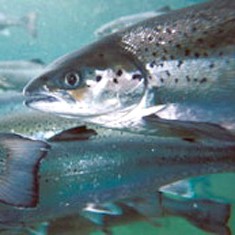A study by the Se a Lice Research Centre (SLRC) has found new methods for detecting resistant sea lice using PCR technology.
a Lice Research Centre (SLRC) has found new methods for detecting resistant sea lice using PCR technology.
SLRC partners, the University of Bergen, the Norwegian School of Veterinary Science and PatoGen Analysis, published results regarding new methods for detection of single nucleotide polymorphisms associated with resistance towards pyrethroids and organophosphates in salmon lice.
PatoGen has developed real-time PCR-analysis that have been validated and tested on a selection of laboratory and field strains. The analysis differentiates between the genetic variants identified by genome sequencing, and correlate with results from bioassays regarding sensitivity to the relevant insecticide.
“Efficient and sensitive methods for diagnosing resistance are crucial in order to manage and control drug resistance. Early detection of reduced sensitivity to a chemical can enable effective countermeasures to be enforced at a time point when these have a greater possibility of being effective,” said SLRC. “Therefore, accurate and speedy identification of resistant L. salmonis is crucial.
“Detection of resistance prior to treatment, and the use of such analysis after treatment to evaluate treatment efficacy constitutes an important determinant for the integrated pest management in the aquaculture industry.”
 a Lice Research Centre (SLRC) has found new methods for detecting resistant sea lice using PCR technology.
a Lice Research Centre (SLRC) has found new methods for detecting resistant sea lice using PCR technology.SLRC partners, the University of Bergen, the Norwegian School of Veterinary Science and PatoGen Analysis, published results regarding new methods for detection of single nucleotide polymorphisms associated with resistance towards pyrethroids and organophosphates in salmon lice.
PatoGen has developed real-time PCR-analysis that have been validated and tested on a selection of laboratory and field strains. The analysis differentiates between the genetic variants identified by genome sequencing, and correlate with results from bioassays regarding sensitivity to the relevant insecticide.
“Efficient and sensitive methods for diagnosing resistance are crucial in order to manage and control drug resistance. Early detection of reduced sensitivity to a chemical can enable effective countermeasures to be enforced at a time point when these have a greater possibility of being effective,” said SLRC. “Therefore, accurate and speedy identification of resistant L. salmonis is crucial.
“Detection of resistance prior to treatment, and the use of such analysis after treatment to evaluate treatment efficacy constitutes an important determinant for the integrated pest management in the aquaculture industry.”





